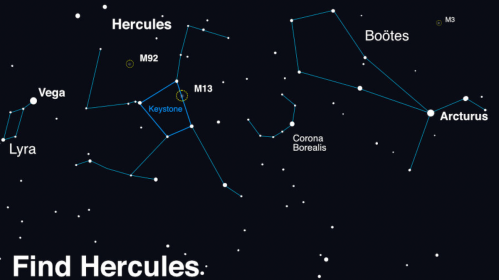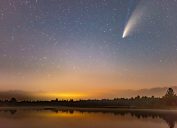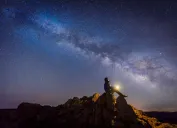New Star Will "Explode" in the Night Sky—How to See the "Once-in-a-Lifetime" Event
The illumination is set to take place between now and Sept. 2024.
2024 is shaping up to be a promising year for rare celestial events, and it appears stargazers are in for yet another worldly spectacle. In addition to the total solar eclipse that's set to occur on April 8, 2024, astrophiles will be treated to a "once-in-a-lifetime" nova outburst that's expected to decorate the night sky in a bright white light and pale orange hue.
The nova, which hasn't exploded since 1946, goes by the name T Coronae Borealis, or T CrB, and is one of five recurring novas in our galaxy, per a release from the National Aeronautics and Space Administration (NASA).
RELATED: Here's How Much of the Total Solar Eclipse You Can See in Your Region.
T CrB is a binary star system consisting of a white dwarf and a red giant. As the pair pulls toward one another (thanks to gravity), the white dwarf heats up and begins collecting "a stream of material" from its much larger neighbor, per NASA. Because the white dwarf has a shallow yet dense atmosphere, a "thermonuclear reaction" occurs—or, in other words, a nova explosion.
In layman's terms, a nova refers to a special class of exploding stars that survive eruption—but what makes T Crb so unique is that its brightness is predicted to jump from a magnitude of +10 to a magnitude of +2, which is the near equivalent of Polaris, the North Star. So you can imagine just how bright a nova outburst of this stature will illuminate the heavens.
(For added context, Polaris is located 430 light-years away from Earth, whereas T CrB is believed to be 3,000 light-years away from our planet.)
Astronomers don't project a short show either, claiming T CrB will light up the sky for at least a week.
"Once its brightness peaks, it should be visible to the unaided eye for several days and just over a week with binoculars before it dims again, possibly for another 80 years," says NASA.
The one caveat is that scientists don't know for certain when it will occur. But experts at NASA presume T CrB will explode sometime between now and Sept. 2024.

However, eager sky watchers can prepare for the light show by familiarizing themselves with the constellation Corona Borealis, which also goes by the name "Northern Crown." NASA explains that this is where "the outburst will appear as a 'new' bright star."
If you have trouble locating the constellation, the government agency suggests locating the constellations Hercules and Bootes. These constellations sandwich Corona Borealis, which presents itself as a "small, semicircular arc."
"You're going to notice a new star in the sky," Bill Cooke, the Meteoroid Environments Office lead at NASA's Marshall Space Flight Center in Huntsville, Alabama, told the New York Times.
For many of us, this may be the only opportunity we get to witness a nova explode during our lifetime. "It's a once-in-a-lifetime occurrence," Cooke continued. "How often can people say that they've seen a star explode?"






















